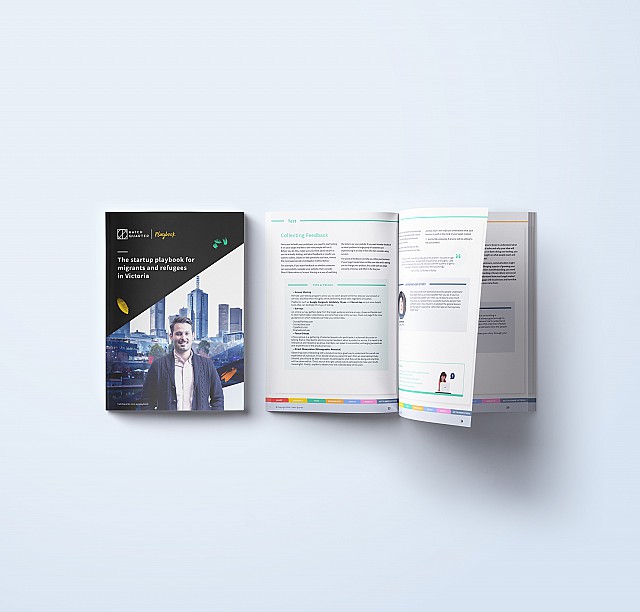Most entrepreneurs dream of getting their big break – the “lightning strike” , or some would call it, the “aha” moment when an idea just comes to you.
In reality, it’s rare to find a successful entrepreneur whose big idea landed on their lap. It’s likely they were already on the hunt.
Therefore it’s crucial you ask yourself this question,
“Why do you want to launch a startup?”
Most successful startups don’t start because of a desire to make money, they start because of a desire to do something more, or to solve a problem.
There are many ways people can identify a startup idea. Sometimes it’s being in the right place at the right time. Sometimes it’s seeing an opportunity in the market. Sometimes it’s discovering a solution in other countries you’ve visited which you believe can be useful in your home country.
However you come up with your idea, one important concept is making sure that you thoroughly research before you start. Many people don’t do enough research before they launch their startup, believing that their passion, enthusiasm, and belief in their idea is enough. Unfortunately, that doesn’t always work.
Thorough, methodical research at the start of your journey is the cheapest way to save (or earn) lots of money later. Even if you find that there is a gap in the market for your business, research can only help you better understand how to position and launch your startup.
Below you’ll find key areas that you should investigate before putting in the commitment of turning your idea into a startup. If you decide to go ahead with your idea it is very likely that the research will help you identify weaknesses and opportunities that you were not aware of, resulting in a new version of your idea.
1. Find Out if Your Idea Already Exists
A quick search on Google will tell you if someone has already started on the idea and how well they are doing it – but don’t let that deter you! Check how they’re doing and you can see where you can improve on your own idea, or how you can do it better.
2. Understand Your Customers
Identify who your startup serves and understand how big this market is. If you’re unsure about the size of your market, the Australian Bureau of Statistics (ABS) is a great free tool to help you determine it.
A common mistake made by startups is thinking that their solution helps ‘everyone’. That’s lazy thinking! There will always be a specific group of customers who will find your solution more valuable than others. Understand who they are, and tailor your idea for them. If you’re still not sure, then put together a survey, and go out there and ask your people directly.
- Do people want what you’re offering? And more importantly, will they pay for it?
- Who are your customers?
- What are their pain points?
- What problem are you solving for them?
- What is your solution to that problem?
- How will you deliver your solution? A platform, a product, or a service?
- What motivates them to buy?
- How big is your market? Or how many people want your solution? And how frequently?
3. Understand Your Competitors
The more you understand the current market, the more you know which gap you’re addressing. Use Google Keyword Planner to find out what people are searching for, and how your competitors utilise these keywords.
- What do they do?
- How are they different from each other?
- What aren’t they doing?
- How is your idea better than others?
4. Do Some High-Level Business and Financial Modelling
Figure out what people are going to buy, how much they will pay for it, and then figure out if you can make a profit from this.
- How much will it cost for you to serve your clients?
- What equipment and resources will you require?
- Can you deliver your business in a profitable manner?
5. Avoid Confirmation Bias
After all the research and data you’re gathering, is it only data that optimistically supports your idea and makes your business look like it cannot fail?
Confirmation bias is a behaviour (and a trap) that many optimistic entrepreneurs fall into, choosing to see only information that supports their vision. Your research needs to be realistic and show all sides of the business.
For international entrepreneurs, you’ll need to be aware of any assumptions based on your personal experience from a different country. Test if those same assumptions apply in Australia. Is there an actual problem for the Australian market? At the end of the day, you’re launching your business in Australia and answering these questions will help determine if your startup is viable this market.
6. Ask the Community!
Ask locals, ask the international entrepreneur community, and ask everyone you can! Don’t be afraid of asking people and getting your ideas out there, because this can be one of the fastest ways of finding out if your idea exists. If it does, talking to people can only help you identify how you can do your idea better.
Market research reports from organisations such as IBIS World can be expensive to purchase and access however, these reports are free for students. If you have friends and family who are studying at a university ask them to see if they can access these reports for you. Also, ABS is a great place to find statistics about Australia.
Finding a good idea for a startup and getting it up and running isn’t easy. But if you take the time to do the preparation and research, you can make your business dreams a reality.
Get in touch with the team at Hatch Quarter to launch your startup off the ground today!
